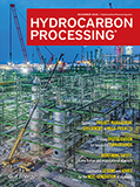August 2024
Biofuels, Alternative/Renewable Fuels
Utilize a hydrogen reactions lab to optimize renewable fuels processing
Leading technology developers in the refining space are utilizing various catalysts to enhance the adjusted reaction chemistry, but this does not directly address how to optimize hydrogen utilization for the hydrodeoxygenation and isomerization/cracking processing steps. To ensure the right equipment outlay and calibration for these hydrogenation applications, replicating the process in a lab setting can help identify efficiencies and yield improvements for a fraction of the cost that a refiner would incur attempting to achieve that optimization through modifications at commercial scale.
This is a preview of our premium content. Thank you for your interest—please log in or subscribe to read the full article.








Comments